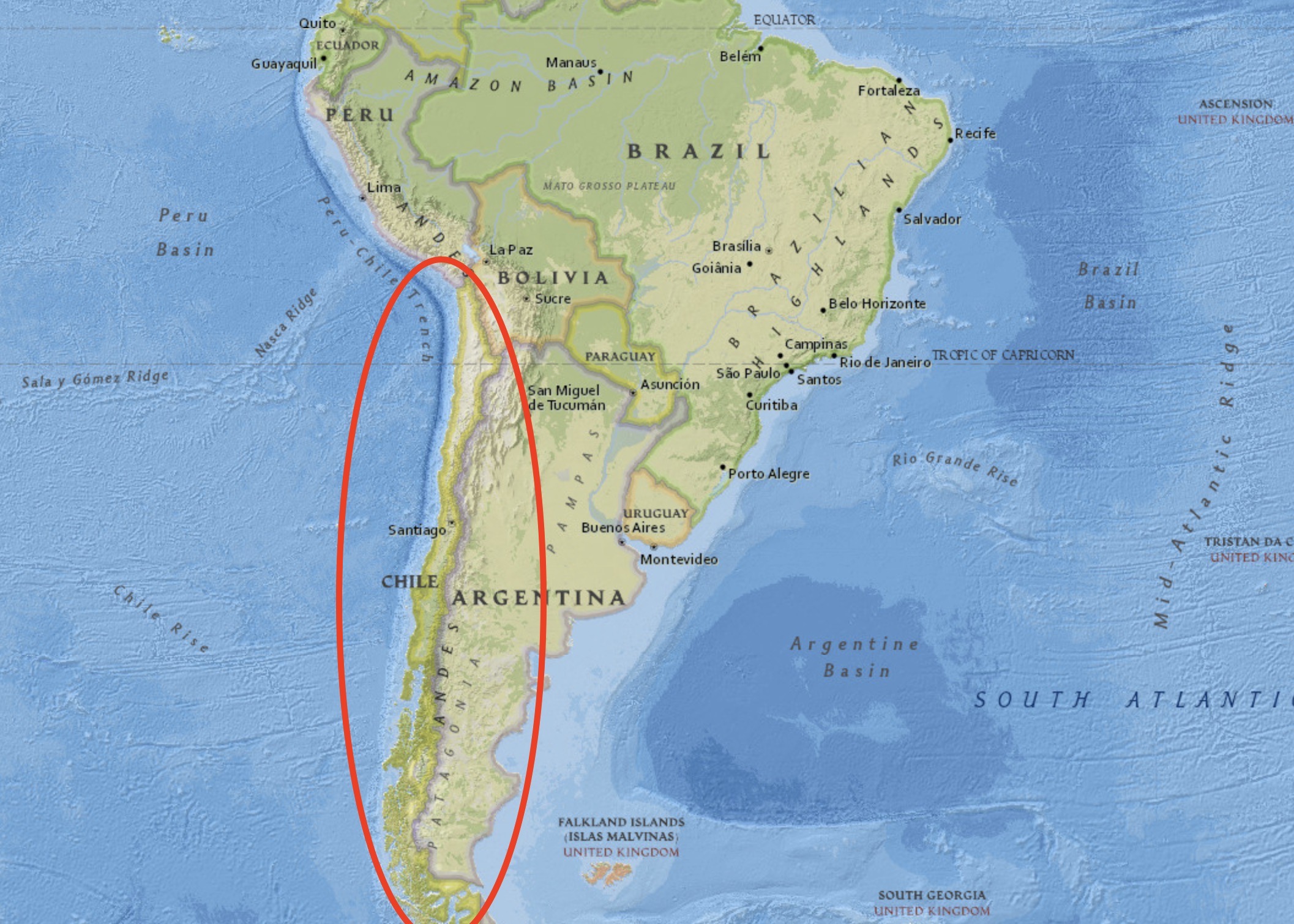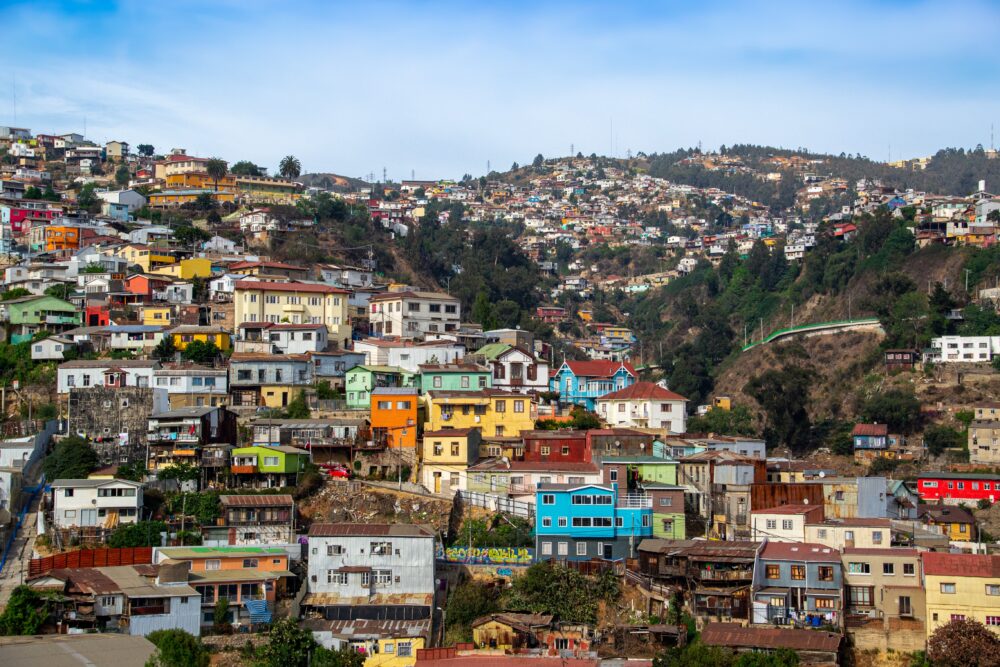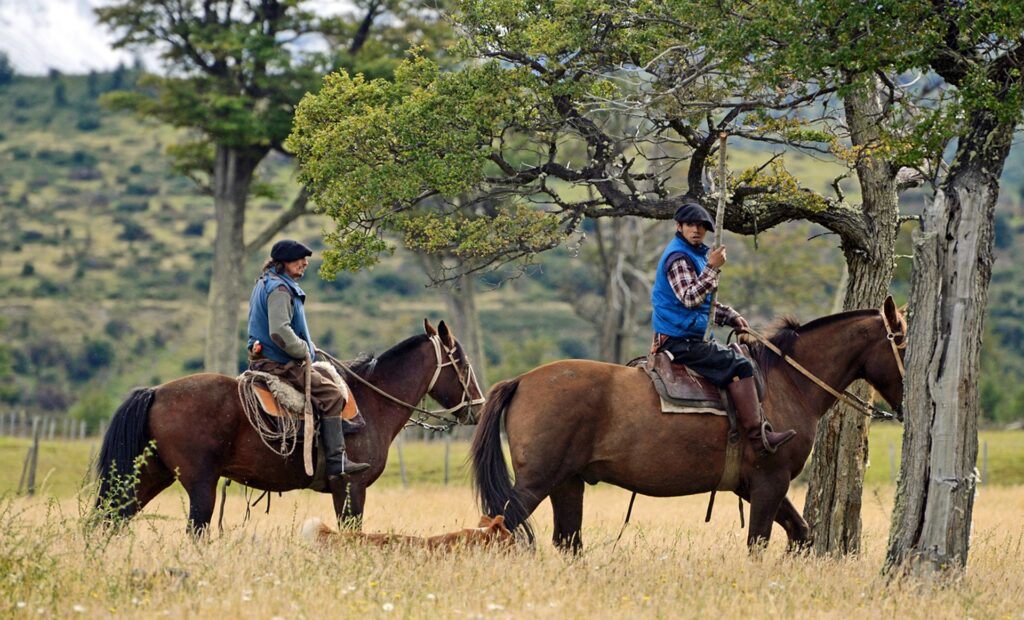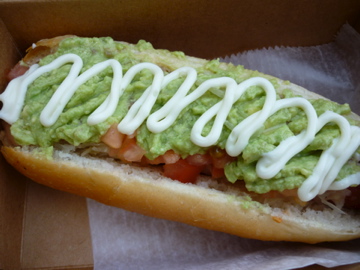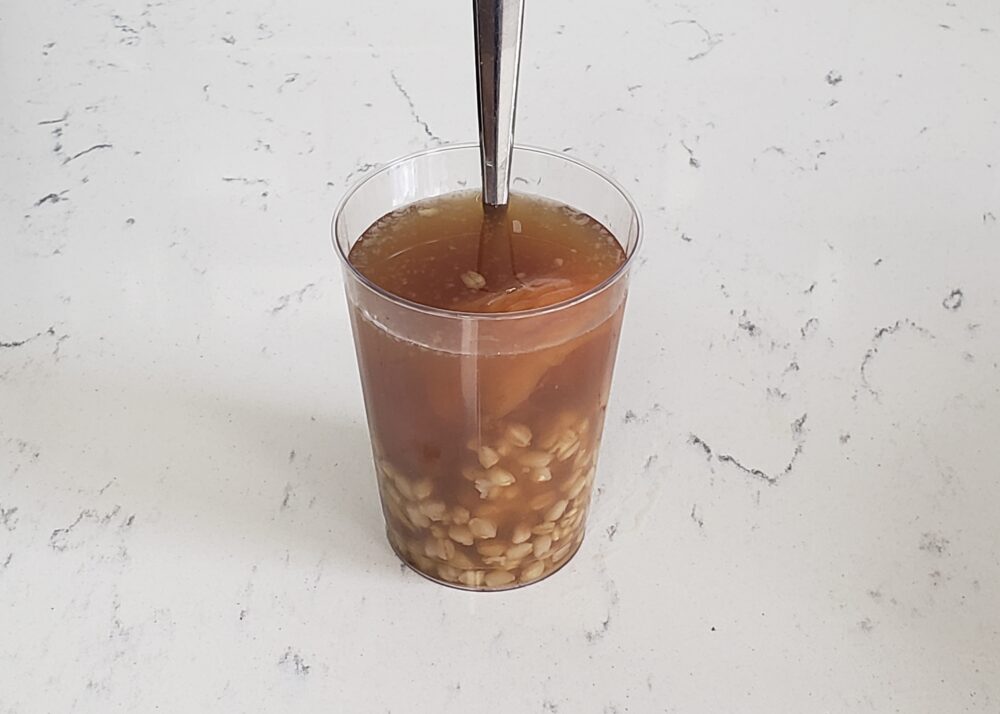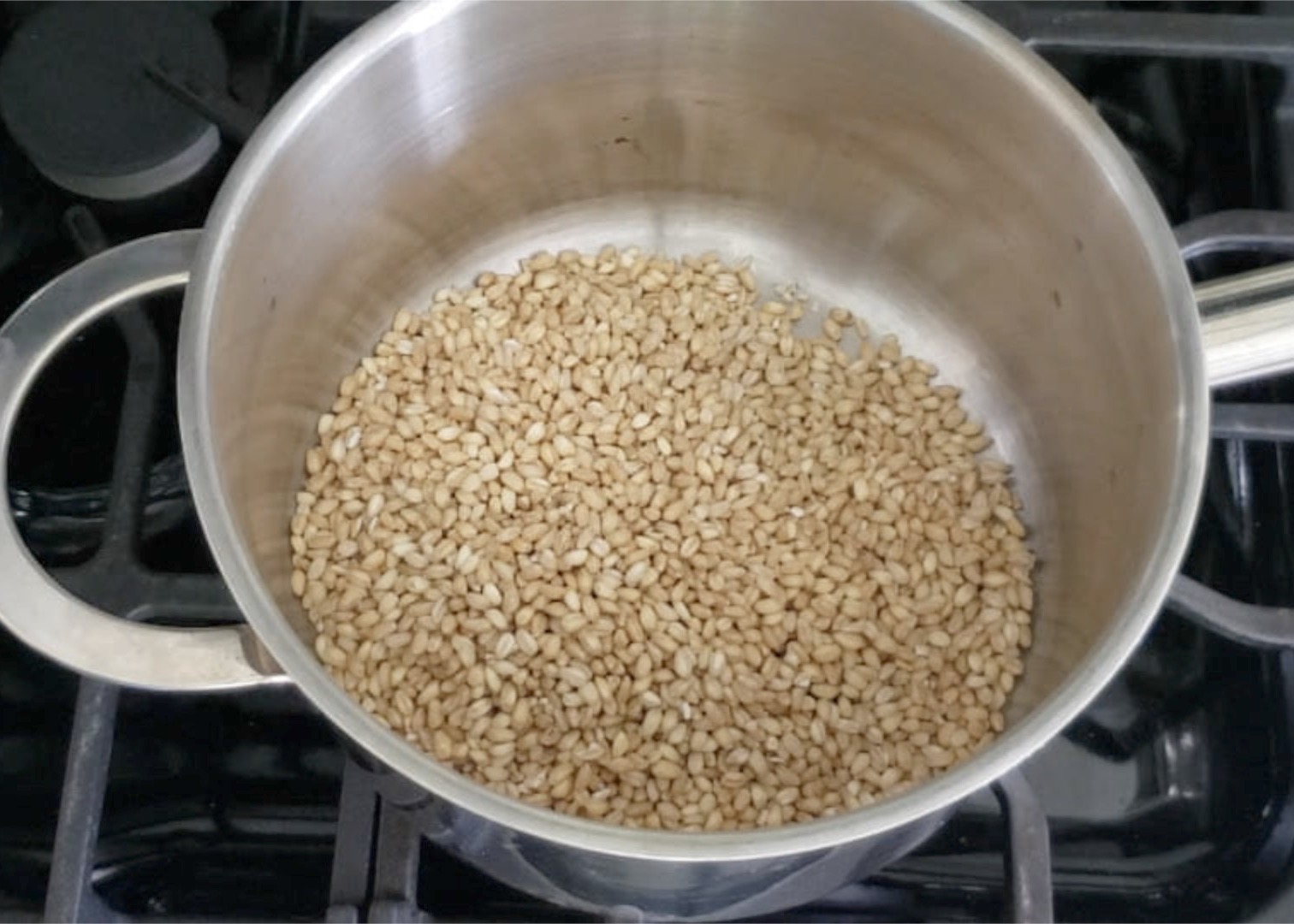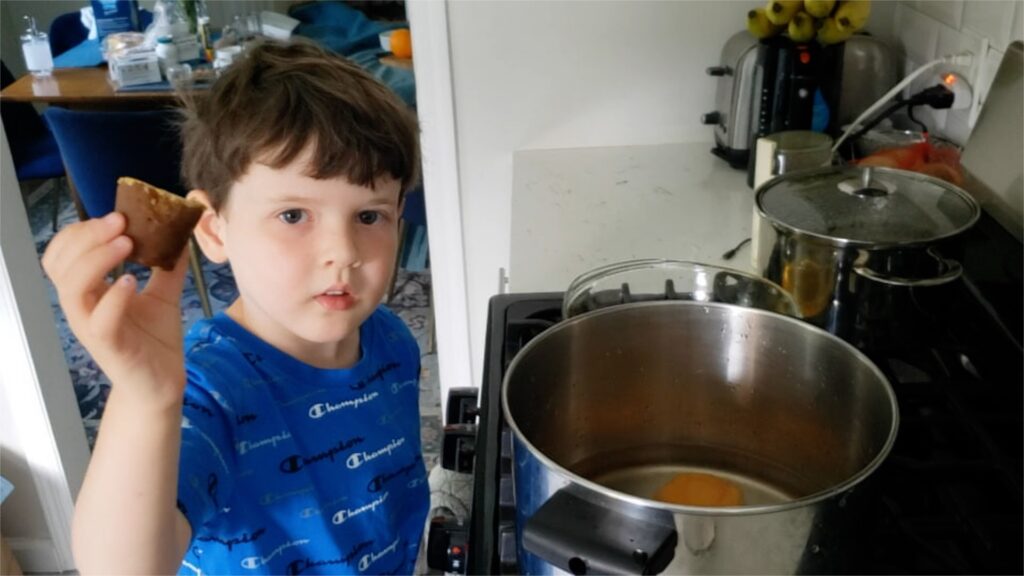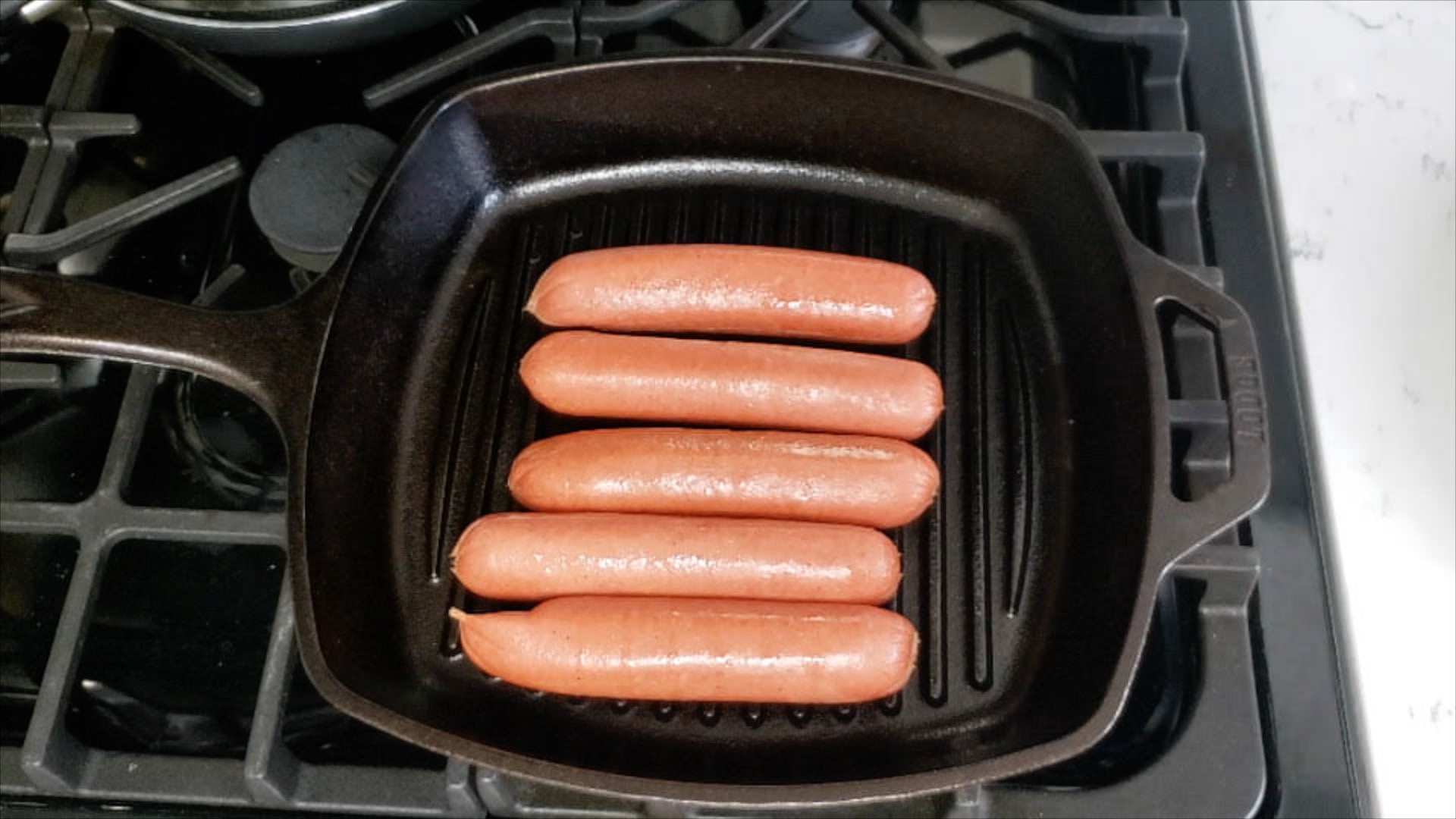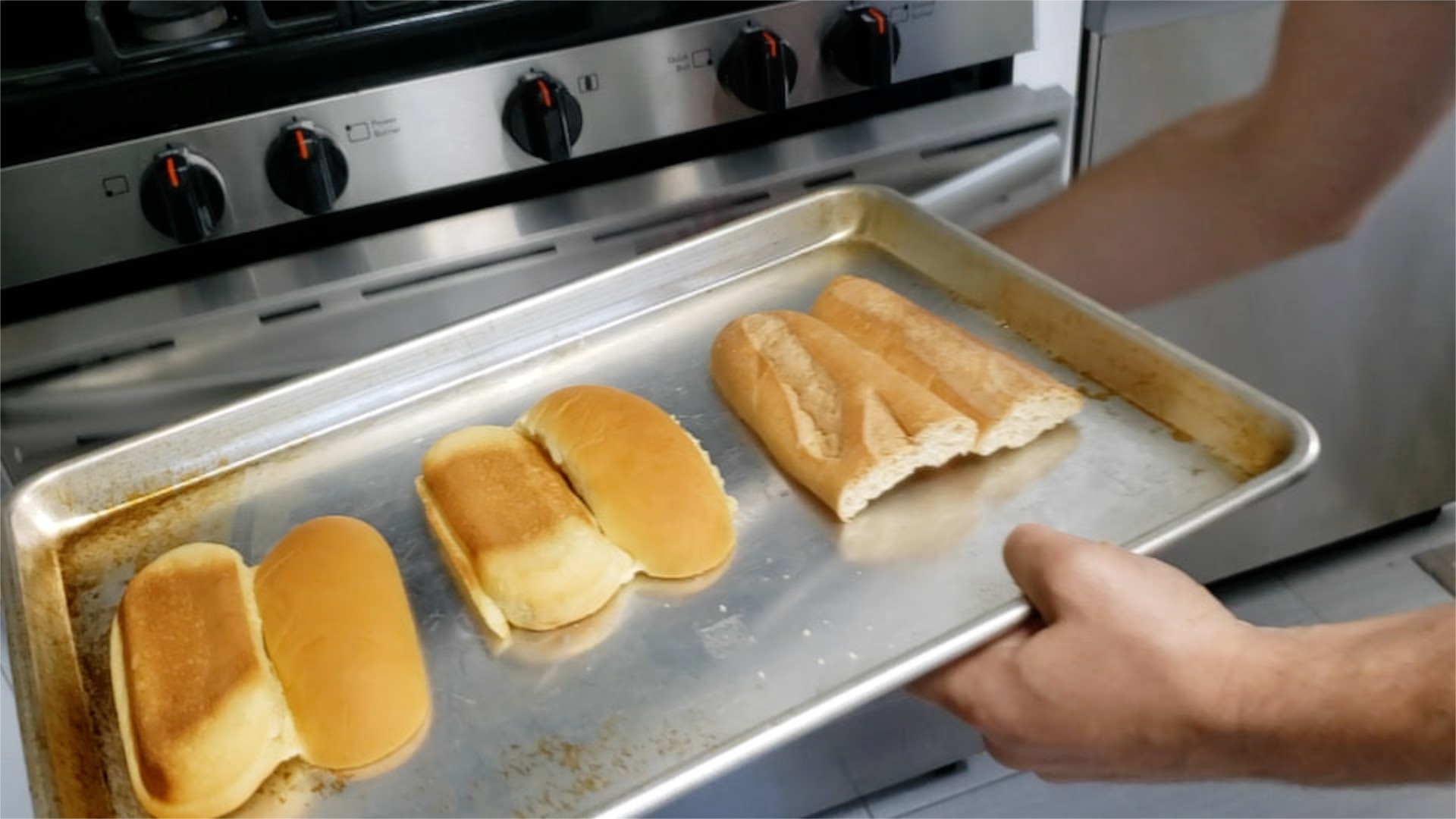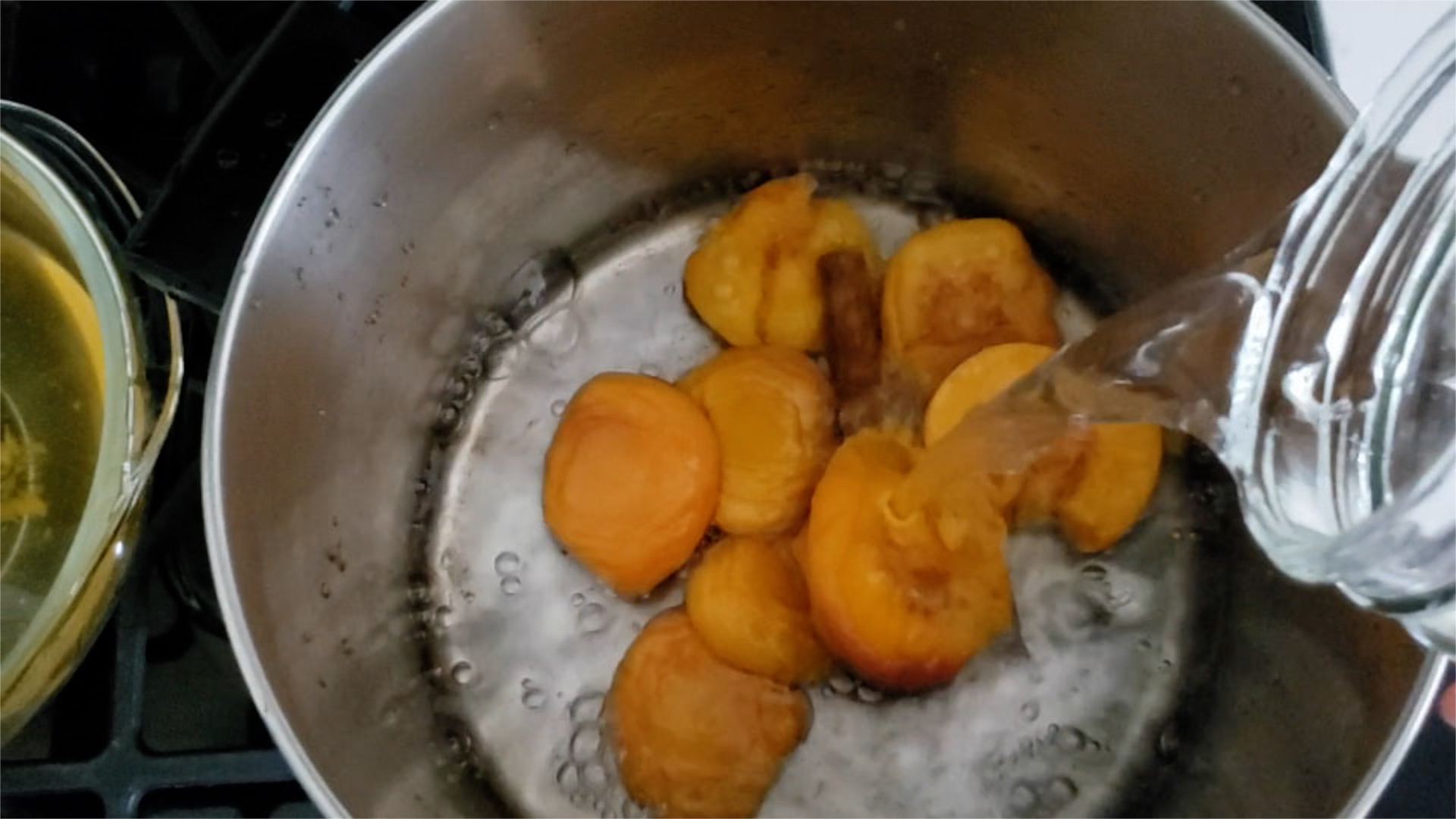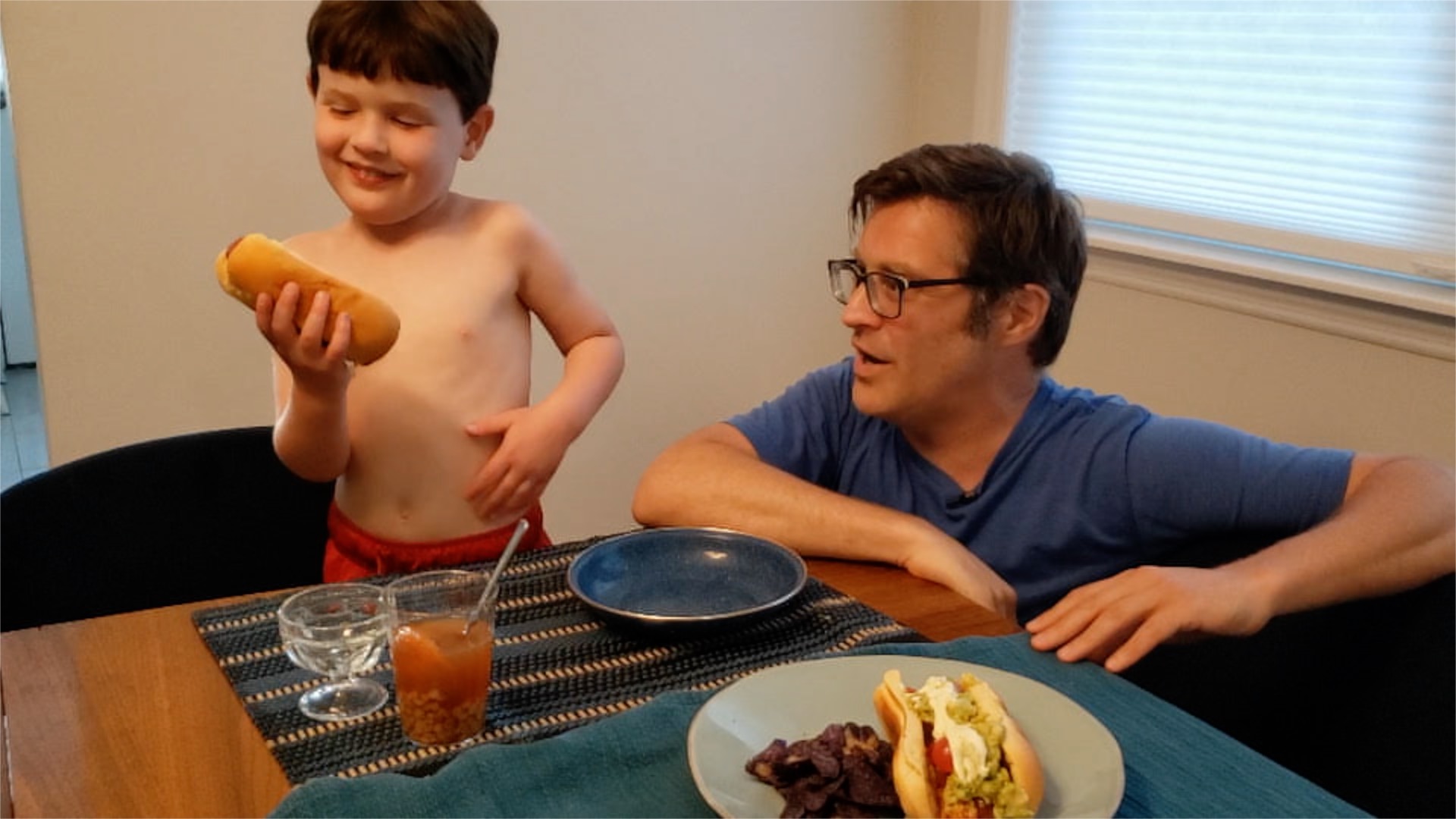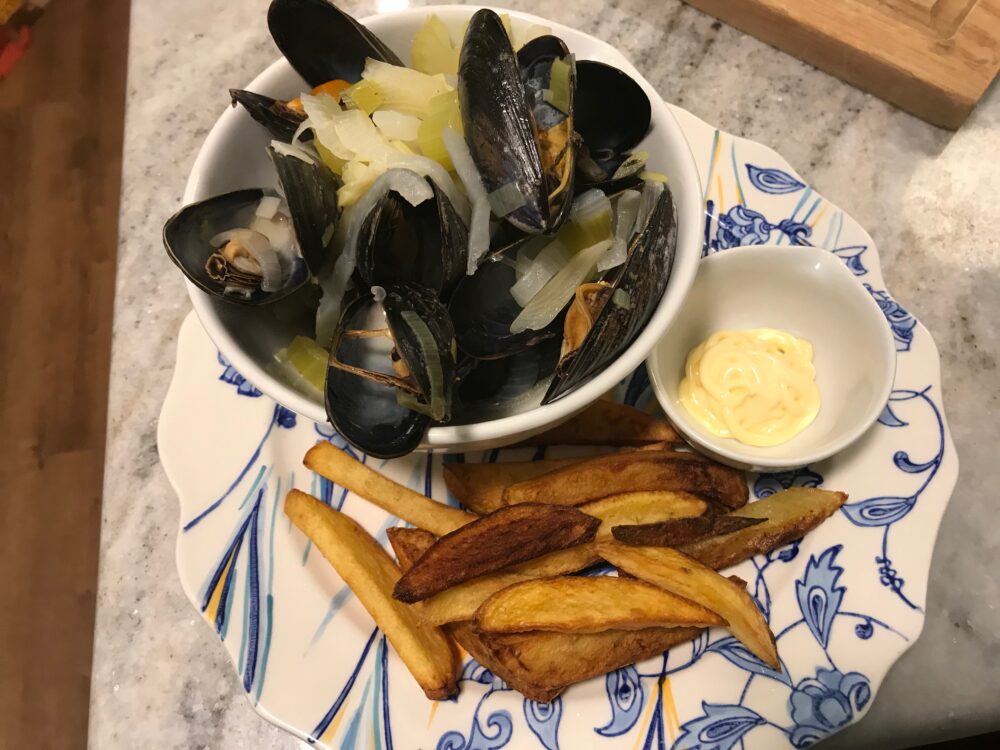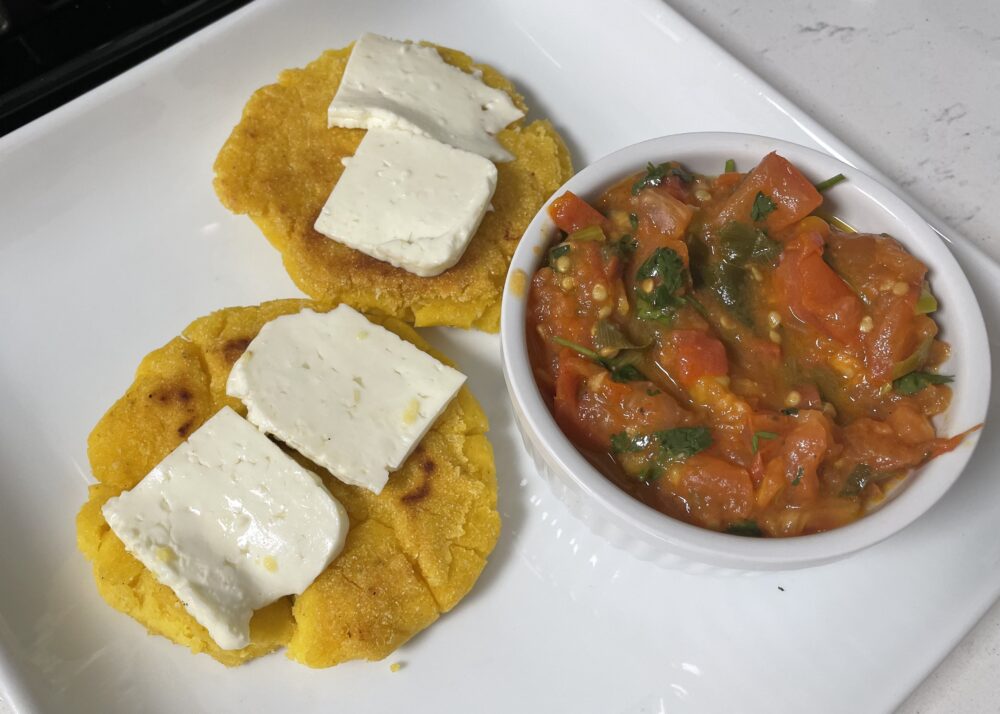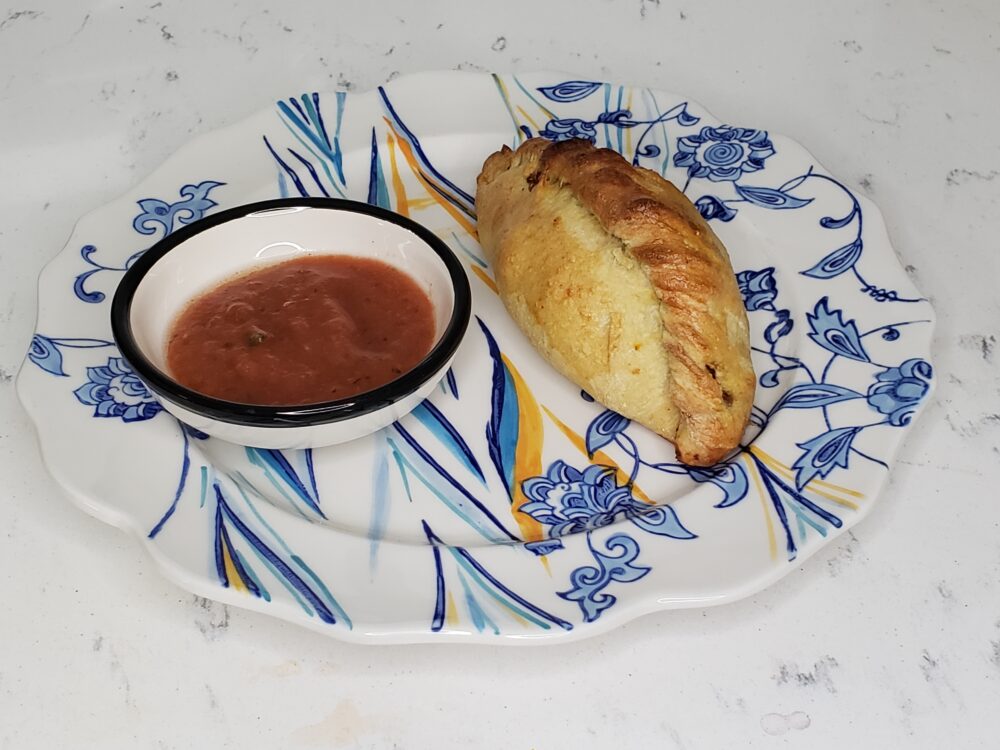Did I ever think I’d make a hot dog during this international cooking journey? Maybe. Hot dogs are not just an American thing. You might be surprised to discover they are huge in Scandinavia, Asia, and, of course, South America. When thinking through the traditional dishes from
Chile, it only made sense to share with Sam their traditional hot dog.
THE PLACE AND ITS CUISINE
A few weeks ago we went way up north to Canada. This week we are going as far south as you can possibly go to Chile.
And while it can get quite cold in Patagonia and the Andes, that is not where the country gets its name. Nor does it refer to a spicy pepper. The name Chile comes form an indigenous Mapuche word meaning “where the land ends.” The only thing further south than Chile is Antarctica.
In addition to the mountains, the long narrow country is also home to deserts, volcanoes, forests, and vibrant cities. Much of its influence, especially regarding food, comes from both the native Mapuche and the Spanish, in addition to large number of European immigrants from Italy, Germany, and Great Britain.
Since Chile has a very long coastline, seafood finds its way into a lot of the dishes, including ceviche. Other major ingredients that can be found growing in the agricultural parts of Chile that find their way into recipes include corn, potatoes, quinoa, avocado, and green chiles.
Meat is also very popular, especially in the South where Chilean cowboys (huasos) feast on beans, stews, and grilled meats.
Traditional Dishes:
MACHAS A LA PARMESANA – this is a dish I would so love to try; an appetizer of local razor clams baked in their shell and cooked with butter, white wine, lemon, and parmesan cheese

PASTEL DE CHOCLO – choclo means corn and so this is a layered sweet corn casserole with beef and seasonings, usually cooked in a clay pot
CAZUELA – a rustic year-round soup usually made with beef, along with potatoes, and pumpkin; seasonal vegetables accompany it depending upon the time of year
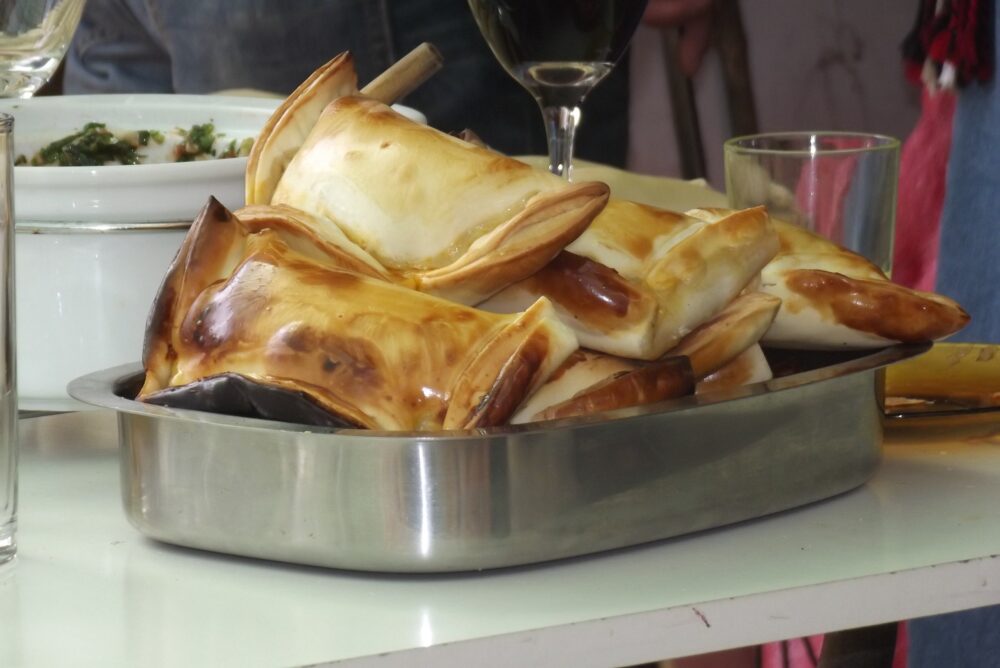
EMPANADAS DE PINO – empanadas are found all over Latin America, but in Chile they are often made this way with ground beef, raisins, black olives, and a hard-boiled egg
CHILEAN FOOD IN NEW YORK
I used to live within walking distance of this incredible Chilean bakery that sold completos and all sorts of Chilean baked goods. Sadly I moved away and San Antonio Bakery closed (they still have a location on Long Island). Now it is much harder for me to get my Chilean fix.
There do appear to be two good options for Chilean food, but both require a travel commitment for me.
If you find yourself in Harlem, Dulceria promises all sorts of Chilean pastries, including a range of empanadas. And for a full extensive Chilean menu (including mote con huesillo), I have been dying to check out La Roja de Todos in Corona, Queens.
THE VIDEO
We get one last taste of summer with these two classic Chilean dishes. Sam discovers a brand new snack, while also discovering some unexpected human-like features on dried peaches.
We talk snow, penguins, and the Italian flag. Check it out now…
THE DISHES
I knew that we had to make a completo to fully complete the Chilean project. I’ve encountered it before and it really does seem to a be a unique part of Chilean food culture.
Variations on the completo abound (all claiming to be complete based on its name), but the most popular one seems to be the Completo Italiano.
In a similar story to the Neapolitan pizza, the colors of the Completo Italiano are said to represent the Italian flag, using popular and local ingredients. Red is tomatoes, green is mashed avocado, and white is a topping of mayonnaise.
The story behind completos is that an entrepreneur named Eduardo Bahamondes started selling these in Santiago in the 1920’s after being inspired by hot dog shops in the United States. And since Chileans didn’t really have a taste for mustard and ketchup, he created toppings that were more familiar and appealing.
Today completos can be found all over Chile, but especially in urban areas in fast food shops, food carts, restaurants, and festivals.
Mote con Huesillos is a drink that I had never heard about before doing the research for this project. The name translates to peaches with wheat berries. Who would think that sounds like a drink?
Well, Chileans certainly do. in fact it may be as identified with Chile as any other food. There is a saying “Más chileno Quebec el mote con huesillo,” which means “More Chilean than mote con huesillos.” Reminds me of some American sayings about apple pie.
This drink is super popular during the summer months since it is always served chilled. Chilled in Chile.
The cooked wheat berries float at the bottom of the liquid and they soak up the flavor of the peach drink. The liquid is made from dried peaches that have been soaked in water and cooked in a simple syrup with cinnamon and orange peel. In addition to sugar, it is often sweetened with chancaca (see below) which gives it some nice caramel notes.
SPECIAL INGREDIENTS:
I thought I was going to have a hard time finding dried peaches, but it didn’t prove too hard. I don’t think I need to explain what those are on this blog, but I do recommend trying to find ones with pits, if possible.
These other ingredients aren’t so difficult to find either (especially if you live near a Latin American grocery store), but might need a little bit more explanation.
Huesillos (Wheat Berries)
These are not so uncommon in the US in salads or as a healthy meal, but I challenge you to find them inside a drink!!
Wheat berries are very nutritious, being the basic form of wheat. All that is removed is the husk from the kernel.
They are quite hard so need to be cooked in boiling water for a while until they are chewy. Flavorwise, they have a nutty earthy flavor and make a really unique addition to mote con huesillos.
Chancaca
This big block of sweetness goes by a number of different names around Latin America. In addition to chancaca, it’s also called panela or piloncillo. It is essentially dehydrated sugarcane juice that is cooled into a triangle or block.
It tastes similar to molasses with caramel and fruity undertones. It also happens to be healthier for you than refined sugar since it still contains lots of vitamins. Sam used this fact as an excuse to eat as much of it as possible.
Mote con Huesillos can be made with a different type of sugar, but using chancaca gives it a very special flavor that is distinct from anything else. If you can find it at your local Latin American story, I highly recommend it.
THE RECIPE
Completo Italiano

A surprising twist to your hot dogs, this is a Chilean favorite with all the colors of the Italian flag, and a loaded hot dog with contrasting textures and flavors.
- 4 hot dogs (all beef, if possible)
- 4 hot dog buns
- 2 avocados
- 3 ripe tomatoes
- mayonnaise
- sauerkraut (optional)
- salt (to taste)
Toast Buns
-
Gently toast the buns in an oven at 350° F for about 5 minutes.
Cook Hot Dogs
-
Simmer hot dogs in slightly boiing water for 3-5 minutes.
-
Quickly remove them onto a plate.
-
Heat up a grill or grill pan and cook until dogs blister and develop nice brown marks.
Make Toppings
-
Mash avocado in a bowl and season generously with salt.
-
Dice tomatoes.
Compose Completo
-
Place hot dog in toasted bun.
-
Top with tomatoes and sauerkraut (if using).
-
Then spread avocado mash over tomatoes.
-
End with a line of mayonnaise.
Recipe adapted from http://firemoda.blogspot.com/2019/09/yummy-mote-con-huesillos.html
Mote con Huesillos from Chile

This is a super refreshing sweet drink that is not found very often outside of Chile. Since it contains cooked wheat berries, it might be more filling than a glass of beer. Loved by adults and kids, you'll often find this at street vendors in Chile, but it's rarely found outside the country. One of the most Chilean things you can try!
- 6 small dried peaches
- 2 cups wheat berries (soaked in cold water overnight)
- 1/4 cup sugar (brown or white)
- 1/3 piece chancaca
- 1 cinnamon stick
- orange peel (from 1/4 orange)
Rehydrate Peaches
-
Soak dried peaches in water over night with cinnamon stick and orange peel.
Cook Wheat Berries
-
Boil wheat berries in 3 cups of water and salt in a small saucepan. Cover and bring heat down to medium. Cook for about 35-45 minutes, until soft but tender.
-
Remove from heat and let sit covered for 15 minutes.
-
Strain excess liquid and chill.
Make Drink
-
Add peaches, cinnamon stick and chancaca in a heavy pot with 5 cups of water.
-
Bring to a boil and then simmer for about 30 minutes.
-
Add sugar and boil for another 20-30 minutes.
-
Remove from heat and cool in the refrigerator.
Put it Together
-
Add 1/4 cup mote to a clear cup or glass.
-
Top with chilled peach drink. Garnish with a dried peach.
-
Serve with straw and spoon.
HOW WE SCREWED IT UP
It was very difficult to screw up something as simple as a hot dog, especially since we didn’t make the sausage itself (I thought about it!!)
However, I have heard from Chileans that there were a few things we should have done differently to get the completo authentic. First and foremost, we used cherry tomatoes and not peeled diced tomatoes.
We did that because the cherry tomatoes were what we had on hand and in the end, I didn’t think it would matter so much, but it clearly was a violation.
We also used the wrong bread – an American potato bun rather than a more firm French style. Cutting it in half and toasting it was also the wrong move. It should have been toasted whole before being half sliced to fit the dog snugly.
All that being said, it was still a good and tasty and colorful dog. We could work on our plating techniques to make a more Instagram-ready completo. But ultimately, it was a moderate success.
I think my worst offense with the mote con huesillos is that I pronounced it incorrectly. Huesillos is pronounced “we see you”.
The drink was great – perhaps too sweet for Sam, but also earthy and spiced with a lovely chewy texture from the wheat berries. I really liked this one.
SAM’S REACTION
My son is so weird. He wouldn’t eat the hot dog and he thought the drink was too sweet.
I can understand being four years old and not wanting all those toppings on your hot dog, but even with a plain hot dog with ketchup, he showed little interest.
Despite the sweetness, he kept going for seconds. And while the hot dog (even with just plain ketchup) wasn’t for him, he sure liked the buns. I think he ate three hot dog buns over the course of the afternoon.
NEXT TIME
Sam has been asking about this country since the day we started this project. That was a long time ago. He must have learned about China in some of his Thomas the Train books. And I’m so excited we finally made it. China is going to be epic…

